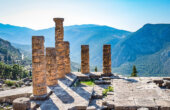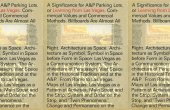Wisdom Hewn in Ancient Stones: In Conversation With John Ochsendorf
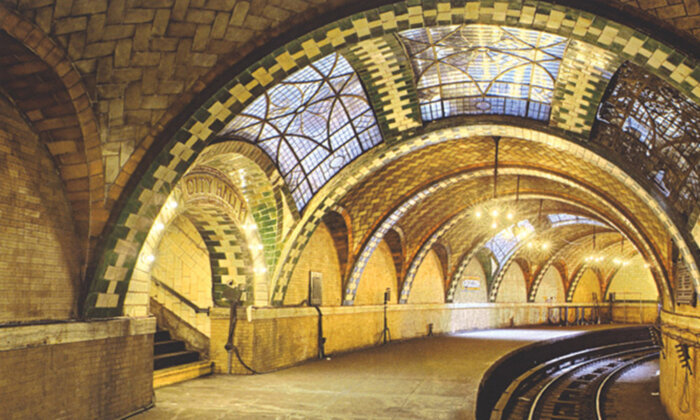
“We as engineers do not study history,” John Ochsendorf laments, “yet one cannot imagine a writer or a composer who does not know his or her field inside out.” After becoming the first engineer to win the Rome Prize, Ochsendorf, who teaches civil and environmental engineering in the department of architecture at MIT, spent a year studying vaulting in Spain and Italy. That year he was also awarded a MacArthur Fellowship, commonly called a “genius grant,” for his pioneering work in restoring structures from the distant past and identifying ancient technologies for use in contemporary constructions. His group at MIT is researching the dynamics of masonry buildings and the design of more sustainable infrastructure, drawing on examples ranging from the vaulted roofing of Gothic cathedrals to the hanging rope bridges of the Inca Empire.
As part of an ongoing series of conversations with leading scientists and humanists (many are both), I caught up with Ochsendorf to discuss everything from the wisdom of ancient architects to designing zero-energy buildings to what he calls a misguided “ideology of progress,” the belief that old materials or techniques don’t inherently have value. Our conversation, a longer version of which can be found in “Is the Universe a Hologram? Scientists Answer the Most Provocative Questions,” has been condensed and lightly edited for clarity.
Adolfo Plasencia: What are some of the marvelous things in architecture and construction that have been forgotten but would be well worth recovering?
John Ochsendorf: If we think about an arch and a dome, they are traditional forms with 4,000 years of development. With the Industrial Revolution and its new materials of steel and reinforced concrete, we have in effect abandoned a 4,000-year-old technology, and this has been a tremendous shock.
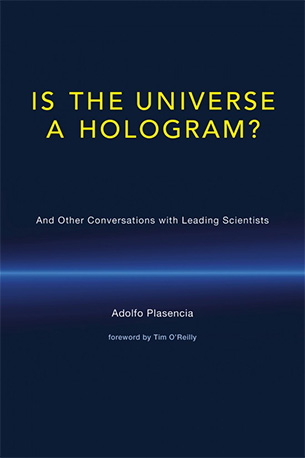
Today, a person with a Ph.D. in engineering from a prestigious university has less idea of how an arch functions than a mason of today, or of 100 or 1,000 years ago. To take another example, there was a colonial-era bridge in Mexico that had been there for three centuries and had survived earthquakes, modern traffic, and wars without any problem. Then, 20 to 30 years ago, an engineer with a master’s degree in prestressed concrete bridges from MIT arrived, made some calculations, and said that this bridge, after three centuries, was no longer viable. He removed the bridge and made a new one of prestressed concrete because it was easier to calculate. My Mexican friends had the last laugh later on, saying that the original bridge had withstood wars, earthquakes, and modern traffic, but it could not resist a person with a master’s degree from MIT.
If we overlook history, or how an arch really works, there is a danger in the economic, cultural, and training senses. We as engineers do not study history. Yet one cannot imagine a writer or a composer who does not know his or her field inside out. It’s impossible. But in engineering, we know hardly anything about the history of our applied discipline, and it’s an impressive history. We don’t know the names or even the works of the great engineers of the past. I personally believe that if engineers and architects knew history, we could learn and understand many things, including both how to look after ancient buildings and how to construct new buildings.
“Today, a person with a Ph.D. in engineering from a prestigious university has less idea of how an arch functions than a mason of today, or of 100 or 1,000 years ago.
AP: You have spent a lot of time studying a building that is one of your favorites. The Pantheon in Rome was commissioned by Marcus Agrippa during the reign of Augustus and rebuilt by the emperor Hadrian. Could the Pantheon provide a lesson in the history that you are talking about? The building and its dome have been standing for 2,000 years and continue to be used. Why do people who respect beauty, the past, or construction not learn a lesson from it? How is it possible that, as these examples exist, students at schools of architecture “unlearn” something like this?
JO: If you study the history of a building like the Pantheon, its geometry and its symbolic elements, it turns out to be one of the most impressive buildings in the world. It has cracks within the dome, cracks of more or less 30 centimeters, quite large, that have been there more than 2,000 years. They are not visible, but they are there. Even so, it remains perfectly stable. We do not, however, fully understand why it is so stable, nor do we fully know how safe it is. So one of the things we do here at MIT is to carry out tests and create new programs to better understand the structural safety of such ancient and impressive buildings. For example, if you consider the tools that we engineers have to make steel buildings, they don’t tell us anything; they don’t have the capacity to tell us enough about a building as old as the Pantheon. So what we have to do is rethink all of this and create new tools with software that takes the historical behavior of buildings into account.
AP: Is it true there are cathedrals still standing that defy the programs of structural calculus in modern computers?
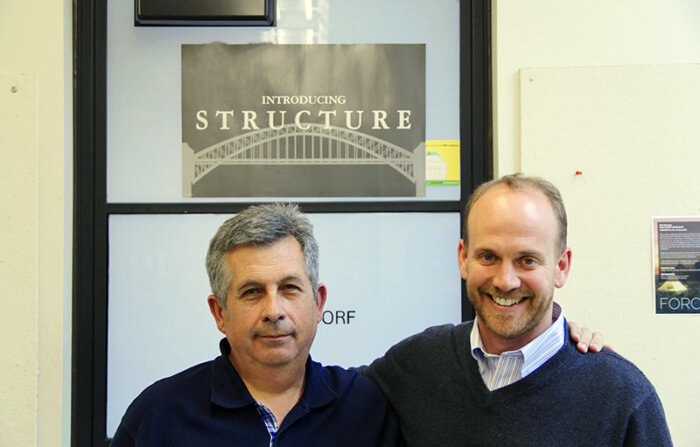
JO: Yes, absolutely. We have no way of knowing at the moment just how stable they are. The Beauvais Cathedral in France, for example, or that of Palma de Mallorca are impressive buildings; they are mountains of stone laid in a stable form, but we do not really understand why they are so stable. The digital tools that we have don’t work on them. We are, however, working a lot with computer programmers, writing new software so as to better understand how those buildings function. These are very difficult problems because the geometry has changed.
For example, the top of the Pantheon has dropped almost a meter over the last 2,000 years, and that has deformed the dome a lot. We have been working with tools such as 3D Scan Laser to discover its precise geometry. It’s a field of work that we are researching. Another field is the history of construction. I ask myself, How was it possible to build the Pantheon 2,000 years ago? How was it possible to build a cathedral 800 years ago? The history of construction is wide open, and we think there are many ideas that can be taken from the past to create new things today.
AP: That reminds me of the time I was on Easter Island and visited the archaeologist there. He alerted me to three significant things. The first was a stone wall made from blocks that weighed several tons, with almost perfect joins. The second was that, on that island, a vibrant civilization had developed completely cut off from the world over 1,000 years ago. And the third thing he drew my attention to is an unanswered question: How did a lithic civilization that knew nothing about metal extract and hew sculptures in volcanic rock, some colossal and weighing almost 80 tons, move them 15 miles over hilly land to their positions, and then stand them up? All the tests that have been undertaken to move similar grand structures have ended in failure. Perhaps it is because we have forgotten how these things were done 12 centuries ago.
Why do you think it is that that all this knowledge has been forgotten and that, as you said, a mason of 10 centuries ago knew more than an engineer of today? Why is accumulated knowledge not considered riches? Is it a question of fashion, of tools, or is it a cultural problem?
JO: It’s probably a cultural problem. I believe, in engineering, we have a misguided ideology of progress. According to that ideology of progress, for example, a brick arch belongs to the past and a modern building must be of titanium or steel. So, on the one hand, our thought is focused only on those new materials, and on the other hand, we are on top, in the most recent layer of history, and we think that we, the engineers of today, with all our computers and tools, are superior to people of 2,000 years ago, who knew a lot but were basically ignorant. However, when I enter an ancient building, such as Agrippa’s Pantheon in Rome, and I observe it from inside, it strikes me that the person who made this building was much cleverer than I am and knew more than I do.
“When I enter an ancient building, such as Agrippa’s Pantheon in Rome, and I observe it from inside, it strikes me that the person who made this building was much cleverer than I am and knew more than I do.”
AP: He was cleverer and possessed the wisdom we have forgotten.
JO: Exactly. I spent my Ph.D. years at the University of Cambridge, England, studying domes and things like that. I began with the mathematicians’ problems of the 19th century in France, studying buttresses and similar structures, which presented real problems at that time. But in the 20th century, with steel and concrete, we have abandoned that field. When we refer to World Heritage sites, we have to understand how these ancient buildings functioned. Furthermore, if we are talking about sustainability, about passive technology, for example, in a climate where the weather is almost always good, there is a body of accumulated knowledge in the vernacular or traditional architecture about how to do these things, and that knowledge base has been growing for centuries and centuries.
However, when we enter our glass boxes in Houston, London, or Valencia, we see that they have nothing to do with place, with the site where they have been built. Knowledge of the site makes sense. When we speak of the future of architecture, I believe it is essential to look back through history for inspiration.
AP: Yung Ho Chang, an MIT professor, said at the 2009 Artifex workshop on stonemasonry that we have to recover the values of the craftsman because he considers architecture to be a craft. Do we have to put an end to the egos of architecture? Should we try to recover the humility that the stonemasons and the bricklayers had, those who knew both the materials and their trade?
JO: It’s difficult to know why certain things happen with the training of architects today. In the United States, the architect is a god. The architects whose work I most like are those who work with people, who use their hands, who have technical ability in other fields, and who work as a team. Of course, a genius may appear at any given moment who can provide the total idea of a building, but I believe that making a building is not the job of a single person. One of the problems that we currently face is how to make buildings with lower carbon dioxide emissions. These difficult questions are beyond the ability of a single field to fully resolve. The only possibility for making buildings that people need nowadays is for there to be an ongoing dialogue among engineers, architects, biologists, information technology experts, historians, archaeologists. It’s clear to me that we have a tremendous problem to overcome.
AP: Let’s talk about a building that you and your team built with three conditions: It had to be built to last 500 years, have zero energy consumption, and use construction techniques that took advantage of local and, if possible, craft materials. Tell me about this building that you were involved in and that, moreover, holds the record for sustainability.
JO: It’s a building in England that we made several years ago. It’s called the Pines Calyx building. You’ll enjoy this story because you’re from Valencia, and it has something to do with Valencia. We used the timbrel vault, which is a type of vault whose origins go back to 14th-century Valencia (the oldest documented example of this type of dome is found there, in the Capilla de los Jofre, in the Convento de Santo Domingo of 1382). Later it was used in New Granada, Colombia, in the 18th century, and in the United States in the 19th and 20th centuries. We faced a difficult problem: how to make a building with the materials available there?
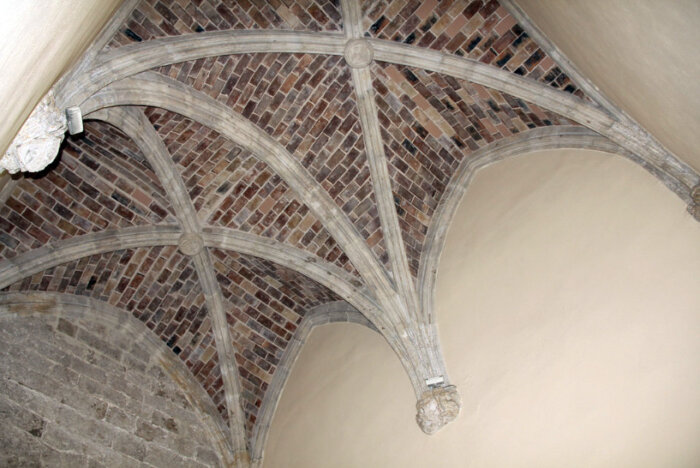
In the end, we made earthen walls, which are similar to concrete but with a much lower energy consumption, and we used hand-made clay bricks that were left over from a mine in England. This was an element true to the type of economic development of that same place. We contracted some Spanish masons from Extremadura to help us with the vaults and built two not very large vaults with a span of 13 meters. By doing so, we were able to considerably reduce their “embodied energy,” that is, their level of carbon dioxide emissions emitted during construction. We reduced those emissions by 80 percent compared with the lowest levels of carbon dioxide emissions in building construction using local materials at that time in England.
It’s obvious that if we don’t have to go to China, Mongolia, Japan, or other distant sources to find materials, that has its advantages; it is much cheaper than other types of construction. Moreover, the money goes to the local people who build the building. This is sensible. In some way, this strategy might appear to be antiglobalization, but I don’t think it is. It is trying to look for solutions that make sense in the area where one is going to build.
AP: Who worked with you on this project?
JO: An English architect and several English engineers, and a group of MIT students. We went there for two weeks, and a person from New Zealand did the vaulting. It was an experiment, but a very entertaining project that eventually won many awards as a sustainable, low-energy building. And thanks to that building of several years ago, we now have many more projects.
AP: As you said, it may be seen as an antiglobalization building. Perhaps the great steel manufacturing and building systems industry have more power than the university schools of architecture and engineering that believe in sustainability? Do you think that the great global industries, for economic reasons, have imposed their power?
JO: That’s an interesting question. I hadn’t given that much thought, but yes, I reckon so. For example, for people like us, as structural engineers, civil engineers, and also as architects, there would seem to be only two materials in the world, steel and reinforced concrete. Obviously, that is not the case. If someone invented wood tomorrow at MIT, it would be seen as the most amazing element in the history of the world. It’s something that comes from trees, which consume carbon dioxide, that has all the desired properties of rigidity — wood is an incredible material, and so too is brick. They are simple materials that have been known for a long time and are materials on a human scale with huge possibilities. However, today we do not talk about those materials. That is partly due to our “ideology of progress,” which doesn’t allow us to think much about wood.
AP: Let’s turn now to a Valencia connection you have, the father-and-son duo with the surname Guastavino. They also had and expressed an “accumulated knowledge” that, unfortunately, we Valencians have almost forgotten. Tell us about your love for the work of these two Valencians.
JO: The family Guastavino came from Valencia. The father, Rafael Guastavino Moreno, was born in 1842. He built several buildings in Catalonia, but at the age of 41 he emigrated to the United States with his son, Rafael Guastavino Espósito. By the 1950s he and subsequently his son had built more than 1,000 buildings in 41 states, including more than 200 in Manhattan and the most important buildings in the history of the United States. For example, Carnegie Hall has Guastavino vaulting. They built vaults just like the traditional ones of Valencia (here I have one of their bricks, which in the Valencia language is called a rajola; it has the brand name of the company that made it imprinted in relief with a picture of its two-layered brick vaults). Valencia provides the first documented example of this type of vault, built in 1382. And even as they worked with this traditional technology they continually sought to innovate, to make greater spans, new forms, using new materials; introducing, for example, Portland cement. They held 26 patents in the United States as they sought to make changes for the better, always innovative changes, such as in acoustics.
One of their important buildings is on Ellis Island, where all immigrants used to arrive in the United States, as my grandmother did, who came from Italy 80 years ago. Five capitol buildings in different states were built by Guastavino, and numerous universities, such as Harvard, Princeton, Yale, MIT, and the University of Chicago, have buildings by Guastavino. The main library at Harvard also has Guastavino vaulting, the original idea for which comes from Valencia. The Boston Public Library, one of the oldest and most important libraries in the United States, was vaulted by Rafael Guastavino. However, their history is not widely known here either: Their buildings include churches, banks, and thousands of other such important constructions in the history of United States, but as architects, engineers, and builders, they have unfortunately been forgotten.
AP: Moreover, these buildings were made at a time when it was difficult to move around the territory, in an age without planes, with very slow trains. The United States is very big, and we never truly appreciate the difficulties that people of that time had to overcome.
JO: Exactly. And they, 100 years ago, had 20 offices in 10 U.S. cities! A hundred years ago, at some point, they were making 100 buildings at the same time, including very large train stations in Chicago, Buffalo, Detroit, and Boston. All the great U.S. cities built train stations using this incredible vaulting made by these Valencians. Today we are losing some of these old stations, such as Pennsylvania Station, which opened in 1909 with timbrel vaults built by the Guastavino Company. It is such a long and important history, and so little is known about it. I have been working for 10 years with colleagues in Spain, architects and engineers who are interested in their history too, because they are also little known in Spain. I also wrote a book, “Guastavino Vaulting: The Art of Structural Tile,” which was published by Princeton Architectural Press. And I have a bet with my students at the MIT that if they find a Guastavino building or a vault that I don’t know of, I’ll invite them for a meal. We have found 80 buildings here in Boston — just a part of the important work they did. Almost every week we were finding new buildings because we still do not know many of their works. So it’s an American, Valencian, and architectural story that is very important to world history but is still little known.
“The life of a reinforced concrete bridge or one of steel is 50 years, but a stone arch can last 2,000 years!”
AP: We’ll try, through this conversation, to raise awareness of that Valencian and American story. Young people always want to be modern, and those at MIT even more so! How do you explain to students what the alchemy is between the knowledge of the past and the vision of the future, so as to continue to make progress without forgetting the best of previous generations?
JO: That’s a fascinating question, and it’s true that students arriving at MIT to study engineering, for example with me, never imagine that I am going to work on stone vaulting. They never thought, prior to arriving at MIT, of building gothic vaults. However, with the training we have at present, it is almost impossible to make a vault like that today.
AP: But people believe that is for economic reasons, but it isn’t, is it?
JO: No, absolutely not! It’s because architects lack the knowledge of how to build them.
AP: The master stonemason and researcher Miguel Ramis says he can prove that a stone arch can be cheaper than one made of steel or concrete.
JO: Of course! And if we are talking about 100 or 200 years ago, even more so, because they last much longer. For instance, the life of a reinforced concrete bridge or one of steel is 50 years, but a stone arch can last 2,000 years!
AP: And as to the alchemy of innovation and the wisdom of the past: How do you combine them?
JO: It’s difficult to explain, but the most important thing is to pose interesting problems. How does a Gothic vault behave in an earthquake, for example? It’s a fascinating problem, and students are delighted with such questions. So if we pose really good questions, the alchemy begins to appear. Again, with the topic of sustainability, how do we make a building with low carbon dioxide emissions? That is a very difficult question.
AP: Yes, because constructing a building throws waste into the atmosphere and worsens climate change. People are not aware of the energy required to make a building and the subsequent effects on climate, is that not so?
JO: Yes. For example, here in the United States, buildings consume more electricity and energy than transport vehicles (cars, planes, trains, buses, motor boats). Of course, we are using buildings all the time but, in many cases, they are inefficient in terms of energy saving. There are, however, many ways of reducing their energy demands. We are moving in that direction, but it is not easy.
AP: Are architects afraid of not being modern, perhaps?
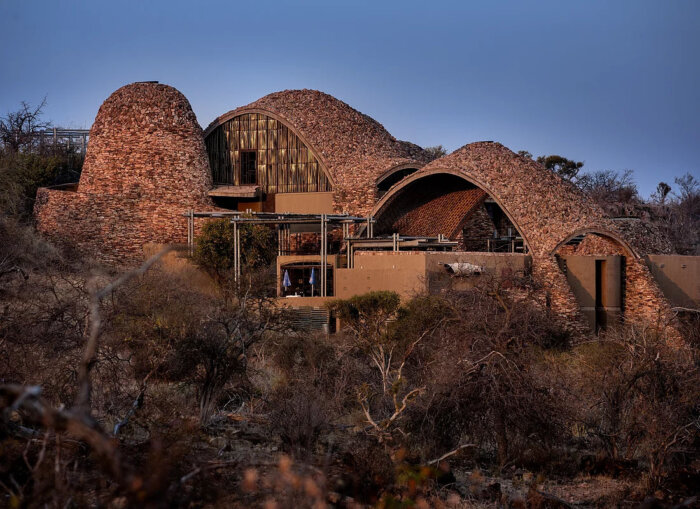
JO: Yes, and an interesting thing is today’s problem, that architects want buildings with new shapes, with the “Guggenheim effect” of Bilbao. So for us the question is how to make a building with less material that consumes less energy and that also has an interesting shape.
As an example, the building we made in South Africa won an award for the best building in the world in 2009. It was made using vaultings.
The building is the Mapungubwe Museum, in South Africa, and is a World Heritage site. It has 15 vaults made with African mud by local people and built by the same New Zealander who did the vaults in England, and it’s considered a revolutionary building! Not long after we presented it as an idea for this way of thinking to the president of the World Bank. We said that instead of sending materials from China, such as cement or concrete, we look for materials and talent locally so as to make new things and build vaults with local materials in a passive building that does not use much electricity. That was a good idea. And little by little these buildings are gaining ground in architecture, but the problem remains of how to make buildings with a lower carbon footprint, but in an interesting and beautiful shape.
Adolfo Plasencia is a blogger, writer, and columnist on science and technology, and the author of “Is the Universe a Hologram? Scientists Answer the Most Provocative Questions.”
